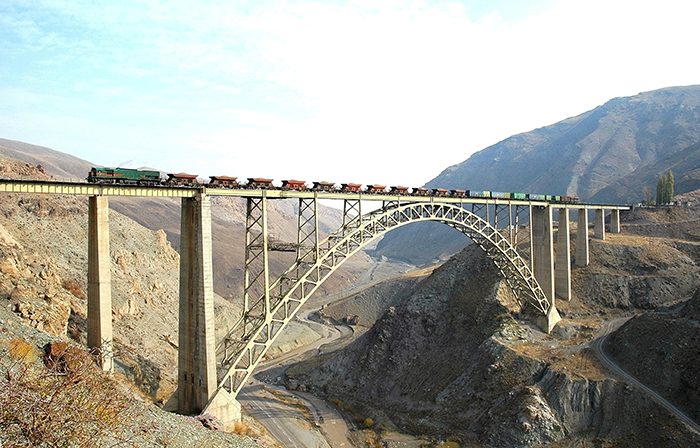Rail transport has always played an important role in social and economic development of nations. This may be the precise reason why President Hassan Rouhani went out of his way to emphasize the urgent need to develop and expand railroads in Iran. In a live TV interview late last month he said "road transport alone cannot meet the rising transportation needs of the economy and railways must be accorded a more central role."
Although the need for modern and efficient railroads has always been obvious, little has been done in practical terms to develop the national railroad system, most of which was built four decades ago, the Persian economic weekly Tejarat-e-Farda reported. Though some network links with a few neighboring countries is in the works, it is often heard that the challenges this key mode of transport faces include the slow speed of trains, a dilapidated network, poor services and lack of economic feasibility.
For years transport managers have been trying to substitute road transport with railroads which is apparently safer and more cost-effective. However, the deficient infrastructure, among other things, has been a major hurdle for the current and previous governments to modernize the domestic railway network. At a recent international conference on rail transport, Minister of Roads and Urban Development Abbas Akhoundi said with the "priority given to commercialization of the railway network, and in order to expand regional transport, the national railway authority (Islamic Republic of Iran Railways) has been instructed to fundamentally review the current railroad structure."
IRIR deputy Ahmad Khodaei, told the publication last week that the government is well aware of the benefits of rail transport, namely energy-efficiency, safety, and economic growth, to name a few. "The support extended by the government has led to fundamental measures to address the problems of the rail network. Older tracks are being repaired/replaced while several routes are being double tracked."
President Rouhani has also stressed that transit of freight and passengers should "increase by connecting the Iranian rail network to the neighboring countries. Links to Afghanistan in the east and Turkmenistan in the north will further enhance the rapidly increasing transit sector," he has been quoted as saying. Measures are also being taken to expedite the completion of the Iran-Turkmenistan-Kazakhstan railway project and the Khvaf-Herat railway link. There also are plans to link railroads with other transportation modes such as airports, harbors, and subways. Connecting subways to the suburban rail network and inter-city connections should help speed up the plans for modernizing the railroad network, officials say. As for funding, the government is financing railway projects through the National Development Fund of Iran plus revenues generated from scaling down fuel and other subsidies.
The majority of transportation in Iran is road-based. The government has plans to transport 3.5% of the passenger volume and 8.5% of the freight volume by rail in the coming years. Extensive electrification is also planned. The railway network expands by about 500km per year. Iran’s railway lines are to reach 15,000km by 2015 and 25,000km by the year 2025. The state railway company has 300 locomotives with an average lifespan of 40 years. IRIR, the Iran Power Plant Projects Management (Mapna) and Germany's Siemens have signed a contract for 150 IranRunner locomotives for passenger trains.


